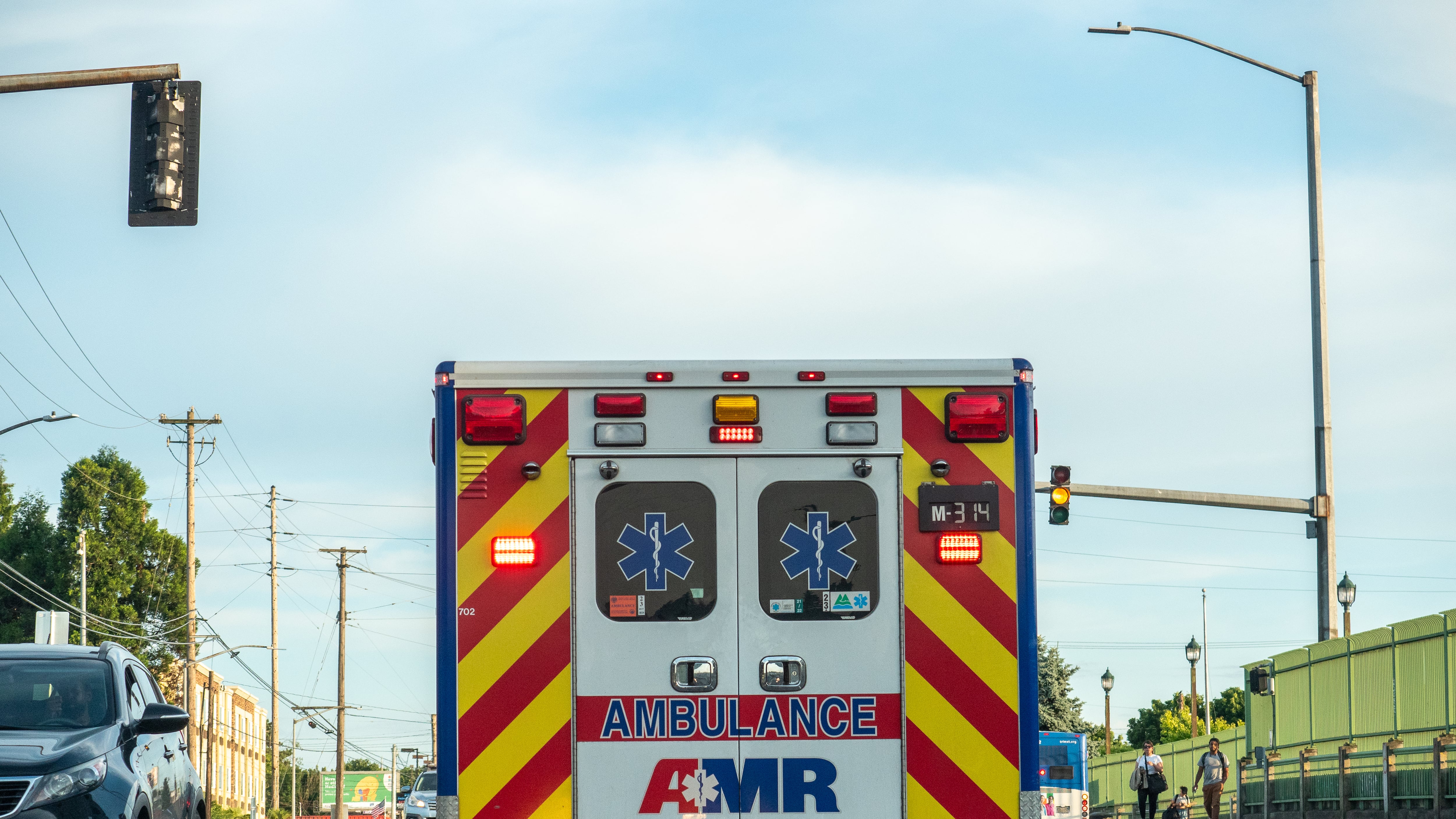American Medical Response, the company that dispatches ambulances in Multnomah County, has been making headlines for a month because of slow service. Patients are waiting longer than the industry-standard eight minutes, and county commissioners are sparring over what’s to be done with its repeatedly tardy contractor.
What’s less well known is that, along with the sick and injured, AMR’s ambulances are carrying around something much worse: a $5.4 billion pile of debt that appears to be on life support.
AMR is owned by Global Medical Response, a Texas-based company that is in turn owned by Kohlberg Kravis Roberts & Co., a New York investment firm that buys up whole companies using borrowed money.
Founded in 1976, KKR is the O.G. buyout—or private equity—firm. The business is called private equity because the corporate raiders who run it don’t tap public markets for money. They raise it from foundations and pension funds. KKR became famous in 1988 when it bought RJR Nabisco, maker of Oreo cookies, for $25 billion. That deal inspired a book that defined 1980s greed, Barbarians at the Gate: The Fall of RJR Nabisco.
Thirty years and hundreds of deals later, KKR bought AMR for $2.4 billion in 2018 and combined it with another company, Air Medical Group Holdings, to form Global Medical Response. All that dealmaking left the newly formed GMR with billions in debt in an industry that’s plagued by a shortage of paramedics, soaring costs, and stagnant revenues. Paying back those billions in such a tough environment could make it hard for AMR to spend what it must to improve.
And it gets worse. In a small-world twist, Oregon’s public employees had a hand in foisting all that debt on AMR.
The Oregon Public Employees Retirement Fund is an investor, alongside KKR, in Global Medical Response. Seeking higher returns for its retirees than it can get in plain old stocks and bonds, the fund invests heavily in private equity. As of April 30, it had $25 billion in KKR and similar funds, or 27% of its total $93 billion, according to public records, making private equity Oregon’s biggest investment by category.
In fact, the retirement fund put up some of the money that KKR used to buy AMR, aiming to profit as KKR turned AMR into a better company. Buyout firms usually aim to improve performance by cutting costs (and jobs) or by combining similar companies to create economies of scale. KKR tried that by combining AMR with Air Medical Group to form GMR.
Instead of getting stronger, GMR appears to need an ambulance. GMR’s debt trades among large investors, and judging from the price, there are plenty who think GMR won’t be able to pay when $4.3 billion becomes due in 2025. GMR bonds trade at about 55 cents on the dollar, according to Bloomberg, a service that tracks such prices. In April, S&P Global Ratings cut its rating on GMR’s loans and bonds to CCC+.
In Wall Street parlance, they are junk.
“The downgrade reflects our view that GMR’s capital structure is unsustainable over the medium to long term,” S&P wrote in its downgrade. “We believe GMR highly depends on a multitude of favorable conditions—including moderating labor and fuel costs, weather, and improving capital markets—to meet its financial commitments over the next 12-24 months.”
GMR says ambulance customers have nothing to worry about. “We have a strong liquidity position, are focused on delivering our services to the communities and patients we serve, and continue to work with our lender partners as we always have,” GMR spokeswoman Donna Itzoe says in an emailed statement.
Spokesman Eric Engelson confirmed the Oregon State Treasury is invested in KKR North America Fund XI, the entity that owns GMR, but declined to say anything more. “Due to our status as a limited partner of the fund, we are unable to provide additional comments regarding activity of the fund’s portfolio companies,” Engelson said in an email.
The treasury’s investments are overseen by the Oregon Investment Council. John Russell, who served on the council for eight years before his term ended in March, says private equity is worth the trouble because the investment returns are so good.
“Private equity has always had the highest return of any investment we make,” Russell says. “It’s risky, but even with a risk-adjusted return, it’s the best.”
Pension funds may love the higher returns they can get from private equity, but there are huge costs to employees and customers of the companies that KKR and others buy and flip.
Brendan Ballou, author of the new book Plunder: Private Equity’s Plan to Pillage America, writes that buyout funds caused 600,000 job losses in the retail business alone in the past decade. He cites a study by the National Bureau of Economic Research showing that private equity ownership of nursing homes has caused 20,000 premature deaths over a 12-year period.
“Similar tales of woe abound in mobile homes, prison health care, emergency medicine, ambulances, apartment buildings and elsewhere,” Ballou, a prosecutor in the antitrust division of the U.S. Justice Department, wrote in an April opinion piece in The New York Times.
State Rep. Mark Gamba (D-Milwaukie) says Oregon’s pension fund shouldn’t be invested in private equity at all.
“I don’t think private equity firms give a rat’s ass about Oregon retirees,” Gamba says. “They care about their fees and how the investment is going to make them richer. They are virtually invisible, and they have absolutely no soul.”
GMR isn’t private equity’s first ambulance ride. In a 2016 exposé titled “When You Dial 911 and Wall Street Answers,” writers at the Times compared emergency service companies owned by private equity to those that were not.
“Of the 12 ambulance companies recently owned by private equity, three filed for bankruptcy in the last three years,” the Times wrote, citing public filings and S&P Global Market Intelligence. “Those three companies had problems that predated private equity. But no other ambulance company tracked by the research firm filed for bankruptcy during that period.”
The emergency medical services industry may be having an even harder time now. In a piece titled “EMS in Critical Condition,” industry news site EMS1.com says the business is reeling. “Workforce shortages, skyrocketing costs, supply chain disruptions and decreasing fee-for-service revenue have put EMS agencies in critical condition,” an industry executive from Texas writes.
AMR suffers the same problems, and some that are unique to Portland. In an annual report to Multnomah County dated Oct. 31, 2022, AMR said it was losing precious emergency responders who cited “very difficult working conditions in the city of Portland and violence against EMS workers as a daily occurrence being just too much to bear. They could no longer endure.”
Lack of staff has led to delays. In February, only 68% of AMR ambulances arrived on urgent calls within eight minutes in urban areas. The standard is 90%.
County commissioners are at odds about what to do. Multnomah County Chair Jessica Vega Pederson has ordered the county health department to consider fines against AMR. Her rival for county chair in 2022, Commissioner Sharon Meieran, blames the county for not relaxing staffing requirements for the ambulances. Unlike neighboring counties, Multnomah County requires two paramedics in every ambulance, instead of a paramedic and a less-trained emergency medical technician.
One solution might be better pay for paramedics, or larger signing bonuses. That would be good for sick and injured people in Multnomah County. But higher pay means higher costs, and those would hurt profit margins at parent company GMR.
AMR’s Multnomah County operations had revenue of $43.6 million in 2022, according to a financial report. Its net income was just $293,345, or just 0.67% of revenue. If AMR’s profit margin is that narrow in other places, it’s easy to see why investors are dumping GMR’s bonds for pennies on the dollar.
When KKR bought AMR and used it to form GMR, it almost certainly hoped to improve profitability and sell the company for more than it paid. If that doesn’t happen, the AMR investment could be a dud for KKR, and for Oregon retirees.
Simply put, Multnomah County may have to choose between better ambulance service for the sick and injured, and higher returns for its state retirees. Washington County may face the same choice soon. AMR is taking over ambulance operations there next month.


